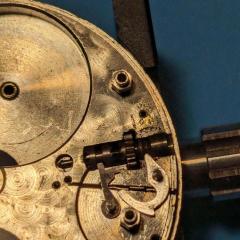Cleaning solution clarification
-
Recently Browsing
- No registered users viewing this page.
-
Topics
-
Posts
-
Thanks Mark for this update. I was a little down last week when I read rumors about the future of this site - very glad to hear that you are committed to keeping this running! I know from experience of hosting my own stuff that most of the time it is a breeze but once in a while there are whole evenings spent making stuff good again. I would be happy to help out on a site support ops team if you wanted to set that up (or have me help set that up)
-
By HectorLooi · Posted
I don't. I just spin off as much excess as possible. I have a strong suspicion that #111 and Rinse #3 contain a high percentage of kerosene. -
So, looking at my own module, I can see that there are actually oil sinks on the outside of the jewels. I am going to apply oil in the conventional manner and see how it goes. Actually, this is interesting. A third version of a service guide for this movement. I did learn that the 0.6mm 'gauge' for measuring the chrono second wheel depth is actually a screwdriver tip (this is sensible, the others just show this as a cylinder shape so I used a micro drill tip). It also provides minimum amplitude for the base movement in horizontal and vertical positions and vertical positions, after 24h with the chrono running.
-
By LittleWatchShop · Posted
How do you rinse so as not to contaminate 111?
-






Recommended Posts
Join the conversation
You can post now and register later. If you have an account, sign in now to post with your account.
Note: Your post will require moderator approval before it will be visible.